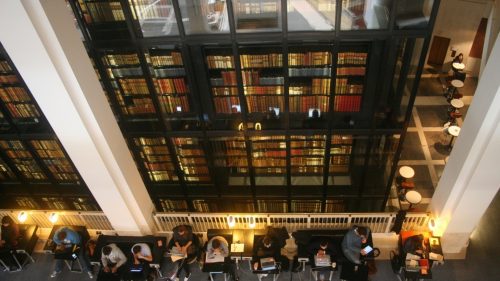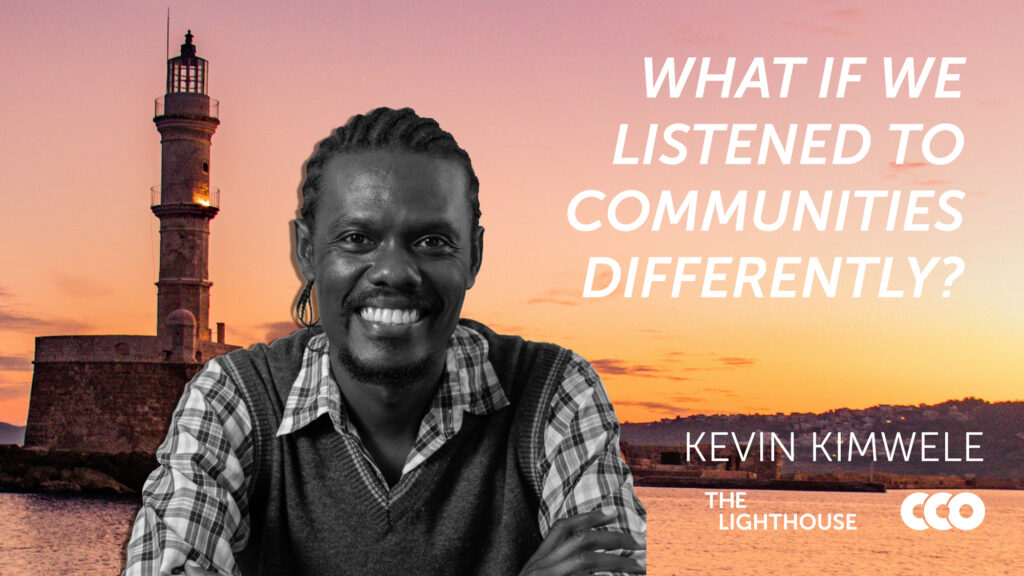Bon Voyage
In late 1516, five hundred years ago this winter, Thomas More published the work by which he is remembered: Of a Republic’s Best State and of the New Island Utopia. The tale is of a faraway island, whose name means “no place”, founded by its eponymous king Utopus; the teller is Raphael Hythlodaeus, whose name means “merchant of nonsense”. This sardonic coding leaves many believing that the book is satire, but lessons abound. Utopia provides a grounding perspective for design and planning, exploring first principles through the lens of the good life. For the purposes of this paper then, we will trust the tale, following D.H. Lawrence’s lead, if not the teller.
Above all, Utopia is a full-flavoured endorsement of Aristotelian ideals; the pursuit of happiness forms its foundation. Eudaimonia, Aristotle’s attempt to capture happiness, underpins the Utopian nation: one position even argues that Utopia can also mean “good place”—”eu”-topia, substituting the same Greek “good” from “eu”-daimonia, or good demon. The orthographic confusion that allows u-topia to become good-place while lacking that pesky “e” is perhaps caused in part by More’s stance on Aristotelian theory. Utopia, the text, espouses a strong Aristotelianism and much of what comprises eudaimonia suffuses Utopia, the place.
Still relevant today, More’s story illustrates an imagined community that places humanity and urbanity at its core. Its themes are particularly evident in an interim issue of the United Nations’ World Happiness Report (2016), which contains a lengthy analysis on both philosophical and psychological understandings of happiness, and synthesis of the two. Anthony Annett (2016) explores in this publication the transition from civic conceptions of happiness to individual ones, a summum bonum—common good—supplanted by a Hobbesian summum malum. Luigino Bruni and Stefano Zamagni (2016) then explore the relational good, a product—Aristotelian in nature—consumed in cooperation with other people, and its ramifications for well-being. The choice of ideal society is, in these contemporary studies and when Utopia went to press, one between Roman and Greek values, of individual greatness and social goodness, respectively.
The purveyor of Roman values during More’s period, Nicolo Machiavelli makes an easy comparison to More, and their linguistic contributions—Machiavellian and Utopian—are the more memorable political coinages of that century. Written in 1513, the Prince was never published, ensuring that More could not consider it when he penned his opus in 1516. Thus, these two texts do not interact directly, but as voyages imaginaires they convey distinct visions, horizontally aligned in history.
Generally, Machiavelli advises that it is better for a leader to be feared than loved. Machiavelli’s government is one of self-sustenance: power-qua-power is synonymous with good governance as all the optimal moves for the prince ensure his supreme reign. More’s government is one for the people, even if it is not of the people: he envisioned benevolent monarchy, with a population happy to be subjected beneath this hierarchy. The irreducible theme here is such: for one, we must worry about government and the people will fall into place; for the other, we must worry about the people and government will fall into place. Roman greatness meets Greek goodness. Should a society be defined by its greatness or by its goodness? This is the question brought to bear when these monographs are positioned antipodally. While Machiavelli gives short shrift to policy, More can be seen as an early proponent of what is now occasionally called the ‘happy city’ hypothesis, that the best investments are made in well-being, rather than in wealth.
The entanglement of wealth and well-being begins with their roots: weal, from which we get both wealth and well, indeed means health. In his Theory of Moral Sentiments, Adam Smith criticised the potemkin nature of riches, which facilitate ‘a few trifling conveniences’. Wealth, however, is more robust. Bruni and Zamagni (2016) posit the importance of Smith’s word choice in The Wealth of Nations, over, say, the The Riches of Nations, because of this. Easterlin (1974) is oft-cited as the proto-paper in “money does not buy happiness”, but Smith prodded at this paradox. More, though, imagined a society from it five hundred years ago. The claim of this paper is that wealth, in its oldest sense, and eudaimonia deserve a place in urban planning—a profession that has focused heretofore on more pecuniary concerns. Further, that the relational life, what Smith called “fellow-feeling”, form the first step in planning the conscious city. With this human-urban bent, More’s work is made available for the 21st century.
The View from Above
Utopia, is first and foremost, grounded in geography: towns neatly placed one day apart, surrounding the capital city. Focusing on Amaurot, which Hythlodaeus claims to be the representative settlement pattern, we are presented with streets of uniform facades and each home, blending into this continuous curtain, getting a garden. The uniformity in Utopia is important, forming the foundation for shared ownership: economic competition is incompatible with More’s conception of the perfect place. In the opening dialogue, Hythlodaeus criticises what he calls the corruption of individuals: governments, for him, ‘first make the thieves and then punish them’. The root of this is inequality: some are educated; others are not. Manners are molded and customs conveyed, but only for the upper crust.
A formal syllogism follows:
We create poverty
Poverty creates crime
We create crime
Looking through this lens, the modern metropolis appals: inequality is sine qua non—from beds in sheds to rough sleeping. There is no room for the “poor door” in Utopia, where people routinely trade homes—such is the absence of material difference from one Utopian to the next. Social and behavioural sciences have much to say about this syllogism, but the geography of Utopia gives an interesting launch point from which to begin our exploration of the ideal city.
Generally, literature reinforces one of More’s tacit positions: the self is situated socially, and there is good reason to believe that an economically “flat” city like Amaurot might be better for its inhabitants than a “spiky” one, borrowing from Richard Florida (2011). Objective variables involved in economic growth play a key part in life satisfaction. Luttmer (2005) looked into neighbourly rivalry, finding that opinions of the neighbourhood are improved by wealthy neighbours, but opinions of one’s own life suffer. Glaeser, Gottlieb & Ziv (2014) find additional evidence that inequality drags down subjective well-being—and this relationship is stronger in European countries. Glaeser and associates cite Bernard de Mandeville’s Fable of Bees for explanation: ‘the less notion a man has of a better way of living, the more content he’ll be with his own’.
Subjective variables are also involved. Adler et al (2000) compiled preliminary data indicating judgements based on subjective social status, determining that supposed position on the social ladder can adversely affect mental health. Heart rate and blood pressure are also implicated 1,13. In further study, another team (of which Adler was a member) explored potential confounding factors, including mood, before finally supporting these findings 19. Effects of these subjective valuations increase when conditions are considered internal to oneself; notably, higher internalisation—or the belief that our condition is caused by some internal personality trait—leads to lower fulfillment of psychological needs 18.
Moreover, different referent groups impact perceptions of self differently; Haught and colleagues (2015) contend that global groups—say, median income earners—allow for fudging more so than local comparison: your neighbour’s flat is definitively nicer than yours. Perceptions exert particular pressure on life satisfaction when local referents form the basis for judgement. Zell & Alicke (2010, 2013) provide evidence in the form of the local dominance effect. In these studies, students in a battery of tests used the most local comparison to evaluate themselves (ibid). We are constantly comparing, and cities are implicated. Could we design a more successful reification of hierarchy than separate entrances?
Education is another component, with the happiest among us most educated, and settlement patterns exert a profound influence in this theatre from childhood into adulthood. Research by Raj Chetty and colleagues (2015, 2016) has shown the importance of neighbourhood in childhood development. Further research by Laura Tach at colleagues (2016) found evidence that similar effects may exist block-to-block. The causation is multifarious, but one study of cadets at the United States Air Force Academy points to the importance of the people around you in educational success 7. Indeed, Chetty’s work has also pointed to the influence of environmental effects like segregation and household composition, rather than selection effects, when it comes to variations in achievement.
The results of these studies and more show life satisfaction shaped by larger spaces and on longer timelines than our quotidian routine—who lives nearby, do they rent or own, and generally how am I doing? Thus, a “happy” city is just as importantly planned from above as it is lived on the ground. When Daniel Burnham moved his office to the 18th floor of Chicago’s Merchant Exchange Building in 1906, a sea change was underway. As he ascended the skyscraper, architects were taking interest in looking down: master plans of Washington DC, Philadelphia, and others revealed increased concern with maps that were as beautiful from the bird’s eye as from the human’s (Koch and Latham 2014). This beauty—the beauty of “Big Plans”—was often detached, concerned with abstract aesthetic (ibid). New understanding our relational lives, however, gives renewed importance to the “view from above”.
Eudaimonia is in one interpretation recursive, ‘the state of being well and doing well in being well’ (Alasdair MacIntyre in Annett 2016); this recursion only occurs with successful social assemblage. The above findings give the rational detachment Burnham achieved an emotional consciousness—sensitive to the sentiments of its planned population but from the highest altitude. Put differently, at the highest order of simplicity (the master plan), conscious city research can reintroduce complexity (the variegated individuals involved). Contemporary cities prioritise greatness over goodness, with clean economic models making for simple plans; symbolic, economic victories, insofar as measures like GDP and GNP are, supercede social ones. This need not be the case: as social science informs, even infiltrates, economics, there is opportunity for new policy.
What ever happened to happiness?
Between antiquity and today, understandings of what constitutes happiness have varied. More penned Utopia during a period of debate: the renaissance’s ad fontes reformulation of ideals from classical thought put Roman and Greek logics in conflict. The winner of this intellectual battle is obvious today. Holistic conceptions of society fell to atomistic conceptions. During this period of diminished religion, notions of good could no longer come down from on high, instead needing “proof”. Courtesy of ‘I think, therefore I am’, the day’s most prominent proof, Renaissance thinkers could not reconcile the Cartesian solipsism—wherein one’s mind was all that mattered—with socialism. Indeed, the Latin word for atom, individuum, gave us individual—the indivisible, provable societal unit. The prevailing value proposition moved from common good, whose dominance was maintained by Catholic decree, to individual good 2. Eudaimonistic ideals and the relational life gave way to hedonistic ideals. Over time, the western world became a “goods society” and abandoned the “good society”, for Anthony Annett.
This goods society had a profound urban influence. In that same 2014 paper on happiness across America, Edward Glaeser and colleagues contend there are spatial irregularities in reported happiness, with certain cities home to unhappy people that would be better off moving to new environs. Controlling for income, as well as other factors, they conclude that economic decline comes with falling subjective well-being. Applying analysis by Oswald and Wu (2011), which studied states rather than cities, Glaeser, Gottlieb and Ziv (2014) determine that amenity has a hand in these parallel falls. People opt into places high in amenity now that it is not a lag on productivity: we no longer need to pattern our settlements around mills and mines, freeing form to comply with different functions. The irregularities occur because some cities fit these new functions better than others—namely, the newer ones, which can save on site clearance.
Early industrial towns were ones in which amenity came at the expense of productivity: a riverwalk would have impeded these mills in early industrial towns. Newer cities are amenity: bars, urban beaches—the consumer city supplanting the producer city. ‘In the early part of the 20th century, a city needed to be unpleasant to be productive. In the late 20th century, it did not.’ [15] These researchers go on to show that the greatest predictor of unhappiness is not population, but population in 1950: the developers of old were building towards different ends than the developers of new, and the result is differences in life satisfaction today—such is the fixity of the built environment. The need for comfort manifests further in America: in the 20th century, the most important predictor of metropolitan growth is January temperature 14.
The contemporary consumer city, however, is burdened by new problems: the trend toward skyscrapers—vertical gated communities, or what Leon Krier calls urban culs-de-sac—and groundscrapers shows the prevalence of consolidated private property. It is the acquisitive developer that wins: Canary Wharf and Hudson Yards furnish the perfect lessons. This was not always the case. When the New York Railroad Company decked over its tracks in the early 20th century, creating what is now Park Avenue, property was sold parcel by parcel; when transit agencies came together a century later to create Hudson Yards, property was sold in lump sum. Ownership patterns like this extend beyond the skyscraper: the land that Park House—a groundscraper on Oxford Street in London—occupies was once distributed between dozens of owners.
These consolidations portend problems with ownership, and the effects could limit cooperative living. That said, The consumer city does not necessarily mean the demise of Eudaimonia. In line with research by Leaf van Boven and Thomas Gilovich (2003), Glaeser et al (2014) offer a function of happiness with experience at its core. Further research 25, 6 has indicated both that people form the core of experience and that an important knock-on effect is the human network that results. Providing evidence for the value of what Luigino Bruni and Stefano Zamagni (2016) call the “relational good”, a product or service with an interpersonal component, this research simultaneously makes the case for eudaimonistic and hedonistic—good and goods—relational life.
A relational life forms the foundation for a new brand of urbanism. According to Anthony Annett (2016), contemporary economics arose from the twin forces of utilitarianism and libertarianism, as the individual—and his governing principles of pursuing pleasure and avoiding pain—took preference from the common good. Discoveries in behavioural science advance a theory of interlinkage, though, bringing the relational life to the fore and blurring the distinction between “good” and “goods” societies. For personal happiness, we must do well with and likely for others—network effects only holding, presumably, if the feeling is mutual.
On greatness and goodness
The Utopian Project gained ground in the 19th century, hundreds of years after the eponymous publication went to press. Many of these attempts have been doomed by their architectural rigidity. Moving from the prescriptivism of Utopias past, and even from the pragmatism of Utopias present, there is unique niche for conscious cities. It is old hat to say that human nature will always waylay utopian plans, but with descriptivism—human needs—underpinning prescriptivism, conscious planning can improve upon previous projects.
Urbanisms undergirding good—promoting human happiness—is challenged in wealthy, western nations: the correlation between urbanisation and reported happiness weakens in the west. 15 This is unsurprising: smartening cities have kept productivity up, but advances in social sciences are fringe factors in how we build cities. This is More’s lesson for today writ large: excessive concern for competition and production neglects happiness—the underpinning point of all the building and buying. As in Easterlin’s (1974) paradox, more money is failing to buy more urban happiness; humanisation is urbanisation for developing nations, but more developed nations have different demands. Similarly, some cities must concentrate more on material needs: relational goods provide dividends only for those living well to begin. Supplementing development, Eudaimonia then provides a valuable starting point for planning the conscious city.
This planning process must reconceive the view from above, exploring the hedonic and eudaimonic opportunities in master planning, rather than simply site planning and design. Incentivising certain agglomerative variations can help or hinder the happiness of entire populations. Constituting a spatial approach to the foundational layer of Tom Frieden’s (2010) oft-referenced pyramid of health impact, planning for improved wellness is responsible best practice. As frieden points out, situational interventions present the ‘greatest potential to improve health’ (ibid). Frieden quotes Rose’s Strategy of Preventive Medicine, ‘it makes little sense to expect individuals to behave differently than their peers’ (Rose 2008)—an unwitting case for the planning as grouping. He goes on, however, to explain that sustained political will is paramount for these interventions, which roll out over vast space and time.
Yet the conscious cities concept comes to planning as support for preventative medicine is cresting. Medical professionals have long been concerned with density, and their coinages convey this. Linguistic constructions follow western urbanisation: neurasthenia, or nervous exhaustion, coined in 1879, prefigured the fever pitch of densification. Freud followed with his own contribution, angstneurose, in 1895 as cities swelled (Smith 2015). The concerns continue—”burnout” being the malady du jour. The conscious city and its “Big Plan” can play an important role in improving the lives of its citizens.
Planning professionals should not wait—not least because sites and structures experience lower rates of “shearing”, borrowing from Brand (1995). The consequences of poor planning will be felt for decades. Too often, mayors grow cities simply to grow cities, making a Prince out of development. More cities could consider what kind of place they would like to be and weigh proposals against that, rather than the immediate monetary injection. In serving both the civic and economic, a city can, as Benjamin Franklin once mused, do well by doing good. This begins with the view from above.
References
1 Adler, N., Epel, E., Castellazzo, G. and Ickovics, J. (2000). Relationship of subjective and objective social status with psychological and physiological functioning: Preliminary data in healthy, White women. Health Psychology, 19(6), pp.586-592.
2 Annett, A. (2016). Human Flourishing, Common Good, and Catholic Social Teacher. In: J. Helliwell, R. Layard and J. Sachs, ed., World Happiness Report 2016, 1st ed.
3 Becchetti, L., Corrado, L. and Sama, P. (2016). Inside the Life Satisfaction Black Box. In: J. Helliwell, R. Layard and J. Sachs, ed., World Happiness Report 2016, 1st ed.
4 Brand, S. (1995). How buildings learn. New York: Penguin Books.
5 Bruni, L. and Zamagni, S. (2016). The Challenge of Public Happiness. In: J. Helliwell, R. Layard and J. Sachs, ed., World Happiness Report 2016, 1st ed.
6 Caprariello, P. and Reis, H. (2013). To do, to have, or to share? Valuing experiences over material possessions depends on the involvement of others. Journal of Personality and Social Psychology, 104(2), pp.199-215.
7 Carrell, S., Fullerton, R. and West, J. (2009). Does Your Cohort Matter? Measuring Peer Effects in College Achievement. Journal of Labor Economics, 27(3), pp.439-464.
8 Chetty, R. and Henderson, N. (2016). The Impacts of Neighborhoods on Intergenerational Mobility: Childhood Exposure Effects and County-Level Estimates. Unpublished Manuscript.
9 Chetty, R., Hendren, N. and Katz, L. (2016). The Effects of Exposure to Better Neighborhoods on Children: New Evidence from the Moving to Opportunity Experiment. American Economic Review, 106(4), pp.855-902.
10 Easterlin, Richard A. (1974). “Does Economic Growth Improve the Human Lot?” In Abramovitz, M., David, P. and Reder, M. (1974). Nations and households in economic growth. New York: Academic Press.
11 Easterlin, R. (1995). Will raising the incomes of all increase the happiness of all?. Journal of Economic Behavior & Organization, 27(1), pp.35-47.
12 Frieden, T. (2010). A Framework for Public Health Action: The Health Impact Pyramid. American Journal of Public Health, 100(4), pp.590-595.
13 Ghaed, S. and Gallo, L. (2007). Subjective social status, objective socioeconomic status, and cardiovascular risk in women. Health Psychology, 26(6), pp.668-674.
14 Glaeser, E. and Tobio, K. (n.d.). The Rise of the Sunbelt. SSRN Electronic Journal.
15 Glaeser, E., Gottlieb, J. and Ziv, O. (2016). Unhappy Cities. Journal of Labor Economics, 34(S2), pp.S129-S182.
16 Haught, H., Rose, J., Geers, A. and Brown, J. (2015). Subjective Social Status and Well-Being: The Role of Referent Abstraction. The Journal of Social Psychology, 155(4), pp.356-369.
17 Helliwell, J., Layard, R. and Sachs, J. ed., (2016). World Happiness Report 2016. 1st ed.
18 Jackson, B., Richman, L., LaBelle, O., Lempereur, M. and Twenge, J. (2014). Experimental Evidence That Low Social Status Is Most Toxic to Well-Being When Internalized. Self and Identity, 14(2), pp.157-172.
19 Kraus, M., Adler, N. and Chen, T. (2013). Is the association of subjective SES and self-rated health confounded by negative mood? An experimental approach. Health Psychology, 32(2), pp.138-145.
20 Luttmer, E. (2005). Neighbors as Negatives: Relative Earnings and Well-Being. The Quarterly Journal of Economics, 120(3), pp.963-1002.
21 Machiavelli, N. and Bull, G. (2003). The prince. London: Penguin Books.
22 More, T. and Turner, P. (n.d.). Utopia.
23 Oswald, A. and Wu, S. (2009). Objective Confirmation of Subjective Measures of Human Well-Being: Evidence from the U.S.A. Science, 327(5965), pp.576-579.
24 Oswald, A. and Wu, S. (2011). Well-Being across America. Review of Economics and Statistics, 93(4), pp.1118-1134.
25 Reis, H., Smith, S., Carmichael, C., Caprariello, P., Tsai, F., Rodrigues, A. and Maniaci, M. (2010). Are you happy for me? How sharing positive events with others provides personal and interpersonal benefits. Journal of Personality and Social Psychology, 99(2), pp.311-329.
26 Rose, G. (2008). Rose’s Strategy of preventive medicine. Oxford: Oxford University Press.
27 Tach, L., Jacoby, S., Wiebe, D., Guerra, T. and Richmond, T. (2016). The Effect of Microneighborhood Conditions on Adult Educational Attainment in a Subsidized Housing Intervention. Housing Policy Debate, 26(2), pp.380-397.
28 Van Boven, L. and Gilovich, T. (2003). To Do or to Have? That Is the Question. Journal of Personality and Social Psychology, 85(6), pp.1193-1202.
29 Zell, E. and Alicke, M. (2010). The Local Dominance Effect in Self-Evaluation: Evidence and Explanations. Personality and Social Psychology Review, 14(4), pp.368-384.
30 Zell, E. and Alicke, M. (2013). Local dominance in health risk perception. Psychology & Health, 28(4), pp.469-476.










